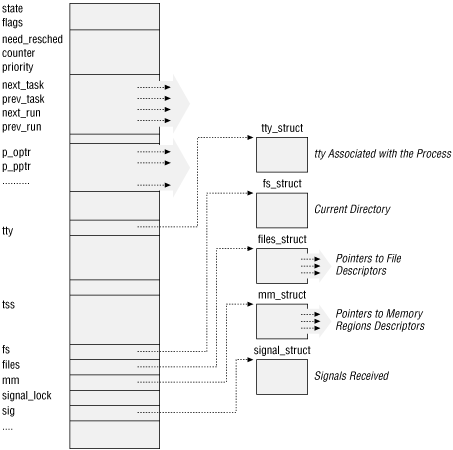3.1. Process Descriptor
In order to manage processes, the kernel must have a clear picture of what each process is doing. It must know, for instance, the process's priority, whether it is running on the CPU or blocked on some event, what address space has been assigned to it, which files it is allowed to address, and so on. This is the role of the process descriptor , that is, of a task_struct type structure whose fields contain all the information related to a single process. As the repository of so much information, the process descriptor is rather complex. Not only does it contain many fields itself, but some contain pointers to other data structures that, in turn, contain pointers to other structures. Figure 3-1 describes the Linux process descriptor schematically.
Figure 3-1. The Linux process descriptor

The five data structures on the right side of the figure refer to specific resources owned by the process. These resources will be covered in future chapters. This chapter will focus on two types of fields that refer to the process state and to process parent/child relationships.
3.1.1. Process State
As its name implies, the state field of the process descriptor describes what is currently happening to the process. It consists of an array of flags, each of which describes a possible process state. In the current Linux version these states are mutually exclusive, and hence ...
Get Understanding the Linux Kernel now with the O’Reilly learning platform.
O’Reilly members experience books, live events, courses curated by job role, and more from O’Reilly and nearly 200 top publishers.

